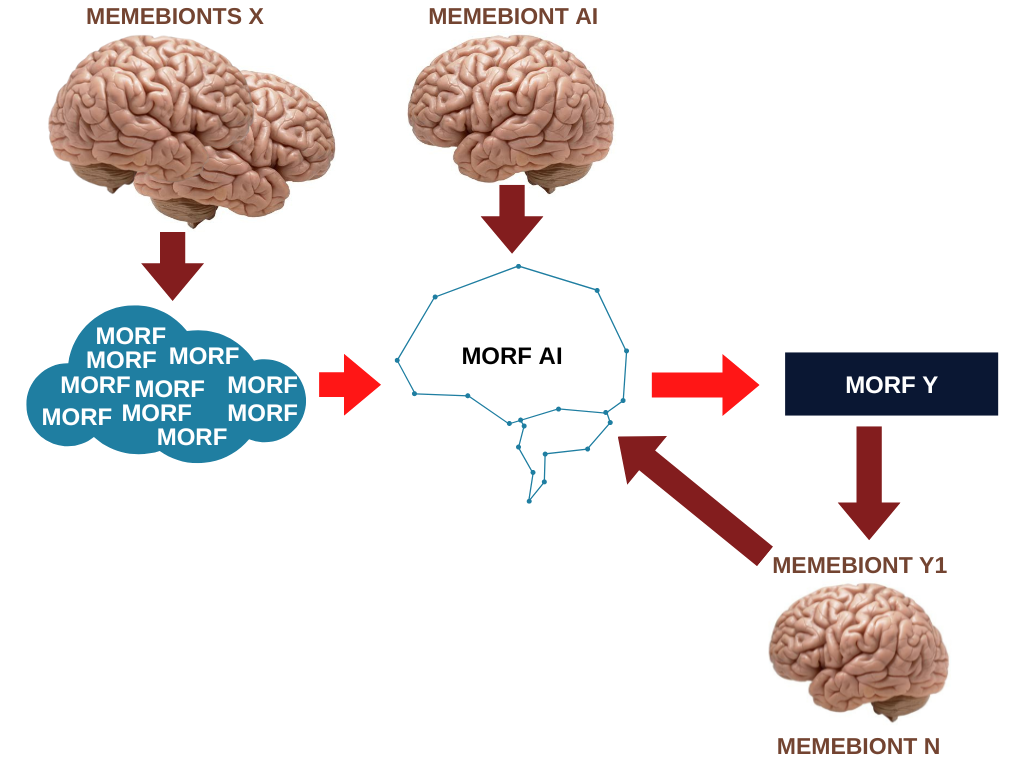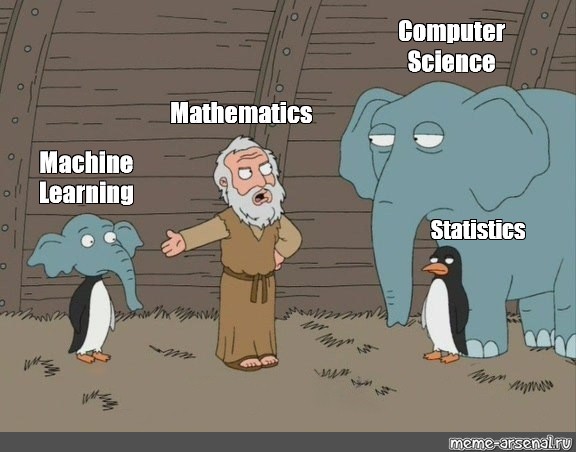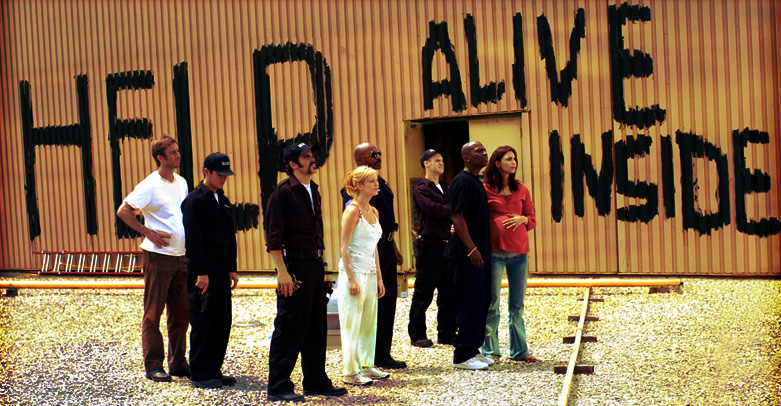I. PHILOSOPHICAL PART
In the previous article on memes, we have also touched a bit on the topic of artificial intelligence, which we are going to look at today, besides the analysis of morf metabolism.
Whether we like it or not, AI is increasingly being applied to some specific part of human culture. Probably Alexa, Siri or Google Assistant means something to all of us. Artificial intelligences that we can ask all sorts of silly questions of and they try to find the best “fit” as an answer.
As a high school student, English essays were no problem for me thanks to the reasonably advanced translator DeepL (by the way, all the English texts on my site – including the one you are reading now – were created from the translation of the Slovak original by DeepL and its subsequent editing by me).
On the street I can see all sorts of Teslas and, with a bit of luck, other autonomous (intelligent) cars from time to time.
It hasn’t escaped my notice that AI is beginning to be used successfully in medical diagnostics, where it can, for example, find incipient cancer on X-rays more successfully than many experienced doctors.
My index finger on my left hand is encircled by an Oura ring, which collects data from my life functions and reports daily outputs of what’s going on with my body, as well as what my ideal day should look like, to the software on my mobile phone (Oura tells me exactly that “if X is happening in my body, I should consider doing Y today”). And it’ s doing great.
I also create some artwork using AI. Since I bought a monthly subscription to Midjourney, I procrastinate in my spare time by creating images by playing with algorithms on Discord. Plus, the AI creates artwork other than pictures. For example, there’s software that you give it the parameters it requires and it composes a musical piece for you, etc. You can try out how it all works online at https://promptomania.com/prompt-builder/, but we won’t go into that in detail in this article.
Plus, perhaps we all use ChatGPT.
Personally, I am very excited about artificial intelligence. I’m even excited about the fact that AI will “take away” some specific jobs from the apes 🙂
II. PRACTICAL PART
Whatever we think of artificial intelligence as, AI is primarily software that simulates the behaviour of neural or cellular networks. Just as everyone was saying the bullshit a lá “the more memory and computing power a computer has, the more it will resemble the human brain” thirty years ago, today this bullshit has been transformed into more bullshit a lá “the denser and more multilayered the network of these software networks, the easier it will be to think, and consequently it can even surpass the thinking of a human being”.
But then let’s think about all this abstraction a little more logically and unbiasedly. And how else but from the perspective of memetics.
Since AI is inherently an artificial software network, it is of course a morf. And every morf is the product of the intentionality of some memebionts that want to reproduce (as explained in the first article on memes).
What makes AI valuable in the market is primarily its ability to solve some specific tasks, such as giving health advice to biohackers, translating trext from language to language, driving a car, having a conversation, painting pictures, or evaluating X-rays. But these are all morfs as well. The AI ingests them and metabolizes them into some outputs. Much like the book printing from the last article. However, there is one significant difference between the book printer and AI – AI doesn’t replicate morfs, but often metabolises them so significantly that they give the impression of some innovation. But still, it’s only an impression. To better understand this, let’s try to analyze the situation in the following figure, in which the brown arrows show the direction of memebiont intentionality in the brains, and the red arrows the metabolic flows between morfs:

As any organism with the sense of sight (and the ability to recognize the symbolism of my sketches in Canva) can see, the center of the picture is an AI morf – a kind of complex network structure of computer software. The AI morf is the replication structure of the AI meme in some sapient’s brain. Many input morfs – the products of memebiont X of many brains – enter the AI morf. And what are these products of memebionts? They are, for example, the tens of thousands of photos taken by many brains that serve as inputs in the creation of AI Midjourney images. Or X-ray photos, texts in some language, snippets of conversations on the internet, etc. The AI morfs metabolize these inputs into a morf Y, such as the image, song, or text translation mentioned above.
Note, however, that just like the AI morf, the input morfs in the blue cloud (photographs, X-rays, texts in some language) are also the consequences of the intentionality of some memebionts. At this point, there is virtually no difference between the book printer and the AI morf. However, it should not be forgotten that the sole purpose of the existence of morfs is the reproduction of memebionts. And morf Y is no exception. When it interacts with the brain of a sapient, it triggers the replication of a new memebiont in it. Here, however, a significant difference arises from the book-printing, because morf Y was not generated by some memebiont Y, but metabolized from many morfs from the blue cloud.
The key in this context is precisely the characteristic way in which blue-cloud morfs are metabolized to morf Y in the AI morf. Artificial intelligence is intelligence for a reason. It learns, which means that it changes its way of metabolizing blue-cloud morfs into Y morfs according to previous events. That makes AI very similar to living systems, which is something that a lot of fanatical AI geeks enjoy. Basically, learning happens by having the resulting Y morf initiate replications in the initiated brain. If the morf succeeds, it gives rise to the memebionts Y1, Y2, …, …,Yn. Yn will confirm this morf to the AI 🙂
Let us note a very important thing in all this – the Yn memebiont does not emerge as a replicant of some original Y memebiont, but emerges through the action of the Y morf. It is also possible that some memebiont N prevents the emergence of the memebiont Yn. In both cases, the brain, in which this process is reversed, acts on the AI morf, creating a new experience for it in the form of its metabolic change (AI training). And the formation of a historical experience of metabolic change is typical just for living systems.
And what does this mean for us? Is the AI morf alive then? Unfortunately, perhaps even that is insufficient to recognize AI as a living system.
In the figure above, it can be seen that the AI morf is undoubtedly capable of metabolic changes of other morfs. One can imagine a situation where an AI morf would be capable of making such metabolic changes that it would replicate itself. If computer viruses, for instance, replicate their structure, why wouldn’t this also be possible for artificial neural networks even with their historically acquired configuration?
To assess the “liveness” of AI morfs, we need only examine whether AI morfs have their own intentionality – intentionality in directing their own activity, intentionality in directing their own metabolism, or possibly intentionality in their own replication.
If we look at the intentionality of any organisms, we can see it throughout their complex organization, at virtually all possible layers of their structure. Metabolic reactions in cells do not just take place independently of each other, but are constantly directed by other metabolic changes taking place simultaneously. This complex network of interactions is targeted precisely to fulfill the two main tasks of every organism – to gather resources for reproduction and to reproduce. Whenever something escapes from this network of interacting intentions, it is immediately punished by natural selection with either a weaker ability to gather resources or a weaker ability to replicate (which we can see beautifully in practice in practically any kind of deviance, whether it is psychopathic and antisocial behavior or homosexuality).
OK. And does the same apply to AI morfs?
There is no denying that the “learning” of artificial software networks is a metabolic sequence of events that are guided by interaction with the environment. In this process, a network of program variable settings is metabolized. And this is fundamentally the same as the network of synapses in the brain, or the network structure of protein interactions in the cell! It is possible that there may be some “source” from which intentionality flows – that is, the way AI responds to the environment.
And our mythical intentionality, as the driving force of organization, is not FIAT – it doesn’t just suddenly arise out of thin air. Intentionality, in the sense of the Darwinian concept of gradual evolutionary steps, somehow “emerges” from non-intentionality. So it’s not a state that just came into existence, but it’s a state that has been gradually transformed from some previous state. Therefore, it is not impossible that the scheme of metabolic changes shown by the red arrows in the figure above is merely some link in the chain of these evolutionary transformations.
To get a better understanding, let us try to look into the molecular world, which is based on molecular metabolic processes instead of morf metabolic processes. The famous Belousov-Zhabotinsky Oscillatory Reaction (BZOR) can be seen in the video:
We see here a complex non-linear sequence of catalysis of several substances, which in a chain of reactions gradually catalyse one another, the third, the third the fourth and the fourth then the first.
This fascinating and visually beautiful scene shows us, among many other things, its very specific characteristic – a kind of self-perpetuation – something like a small evolutionary step from simple metabolic chains that proceed, thus bringing themselves to an organizational end. BZOR is maintaining itself while it has something to maintain itself from. So it undoubtedly has some basic manifestation of intentionality. And in each of our cells there are a vast number of similar networked catalytic metabolic transformations.
In an artificial software network we can see similar processes as in BZOR. Each node of an artificial software network somehow conditions the states of other nodes, and these in turn condition the original node. And although this process is far from reaching the complexity of metabolic networks in the cell, or networks of memes (metabolic changes of reactions in the brain), it can nevertheless be granted a certain degree of intentionality. Indeed, at the same time, we can see a scheme of evolution from a linear directed chain of reactions to a nonlinear autocatalysis of BZOR even in the case of morfs. For morfs, however, it is an evolution from linear metabolic transformation of morfs in the case of the book printing, to AI non-linear metabolic transformation of morfs 🙂
In an artificial software network we can see similar processes as in BZOR. Each node of an artificial software network somehow conditions the states of other nodes, and these in turn condition the original node. And although this process is far from reaching the complexity of metabolic networks in the cell, or networks of memes (metabolic changes of reactions in the brain), it can nevertheless be granted a certain degree of intentionality. Indeed, at the same time, we can see a scheme of evolution from a linear directed chain of reactions to a nonlinear autocatalysis of BZOR even in the case of morfs. For morfs, however, it is an evolution from linear metabolic transformation of morfs in the case of the book printing, to AI non-linear metabolic transformation of morfs 🙂 !
However, the difference between the molecular world and the morf world here is fundamentally that the BZOR reaction is completely independent, whereas the AI morf is driven by the intentionalities of many memebionts (X, AI, Y and N in our figure). But what happens if morf Y is not being evaluated by some brain with memebiont Y1 to Yn, but by some other AI morf? We can see this very situation in the figure below. The AI morf in this case is trained not by some intentionality of memebionts, but just by another AI morf (in the figure it is the AIc morf):

In such a model of software network learning, the feedback for the AI morf does not necessarily come from the Y1 to Yn memebiont (hence the dashed arrow), but the whole AI + AIc morf set can regulate its own learning. Metabolic flows between morfs (red arrows) begin to form networks. And all together, this is already starting to remind us very vividly of the metabolic networks in cells and the metabolic networks of memes in the sapient brain.
Personally, I can’t negate that such a phenomenon resembles just a living ecosystem of two organisms directing each other’s metabolic flows, or an ecosystem of neuronal populations networked by neural pathways. And the development of AI is currently moving exactly in this direction (reinforcement learning, Q-learning).
But it should not be forgotten that this whole beautiful network is mainly guided by the intentionality of the memebionts. Moreover, it does not even reproduce itself, its reproduction is fully under the control of the intentionality of the AI and AIc memebionts. So it’s not actually alive – its evolution is still taking place entirely in the environment of the brains, and therefore the AI morf certainly can’t leave that environment. Nevertheless, thanks to all this, we have here a quite interesting proto-symbiosis of three symbionts – apes (sapients), memebionts and their morfs, which can have a kind of intentionality. And we’ll discuss the implications of this symbiosis in the very next article on memes.

